Learning how to plant blueberry bushes is easy with the tips below. Spring is just around the corner, and we’ve spent the last couple of weekends planting blueberries. Blueberries are a favorite summer berry here. We eat them so much that planting a few bushes was a must.

Summer
I love summers in the south. There is just something magical about that time of year for me. I love being able to stay outside late into the evenings. I love watching the fireflies at dusk while listening to the crickets and frogs. We also have several local whip-poor-will birds that add romance to the night sounds.
I also love the heat, and the short afternoon showers that cool the day. The sounds of the cicadas that seem to make the sun scorch. The heat makes a perfect excuse for a mid-day nap. If one should dare to venture outside, then a shady spot to sit and a cold drink are a necessity.
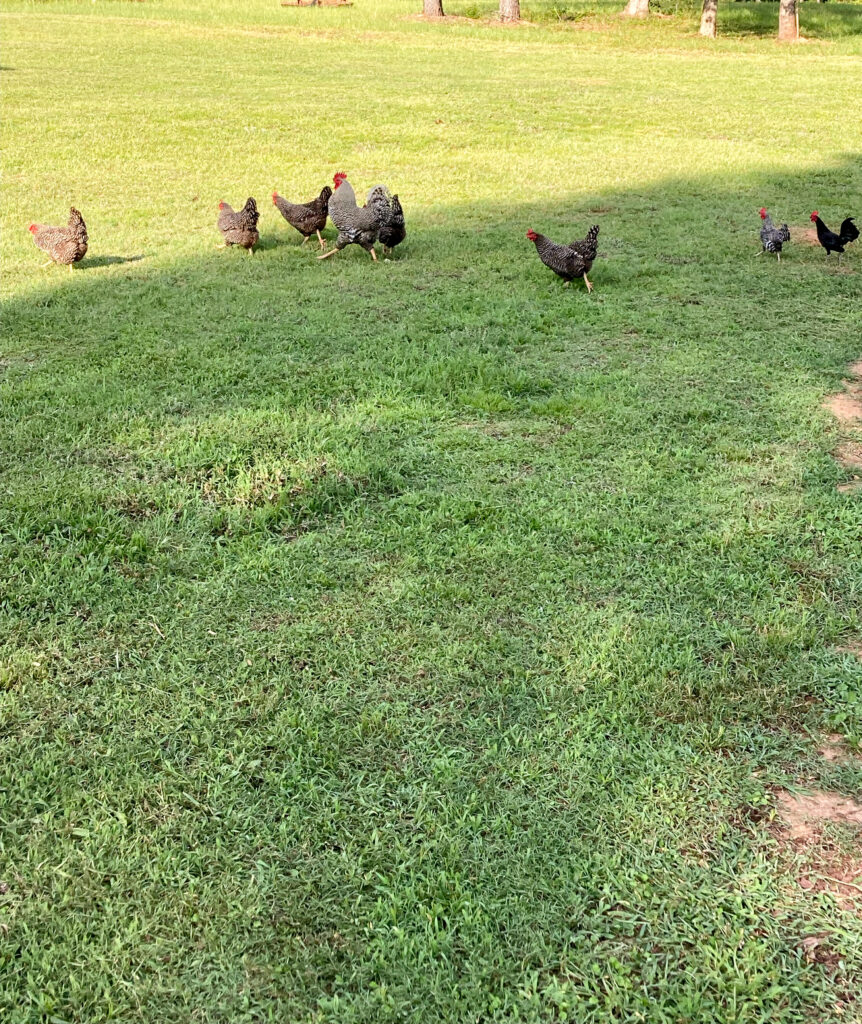
The Perfect Spot For Planting Blueberry Bushes
One of my favorite things about summer is the berries. The kids and I spend hours in the thick briars hunting down blackberries. We know all the best spots to find them. We’re also a couple of miles from a U-pick strawberry patch. It’s a must-visit spot in spring. Our favorite summer berry is blueberries. We eat them daily when they are in season. We’ve had a few bushes in our yard for years, but they never produced much. This year we decided to get serious with planting blueberries.
A few years ago we had a small patch of trees in our front yard thinned. After the thinning, several of the trees died . We later decided to have the whole area cleared. There were mostly pine trees in this section, so the soil is pretty acidic from the decayed needles. The spot is approximately one acre and in full sun. We knew it would be a perfect spot for growing blueberry plants, and a muscadine vineyard.
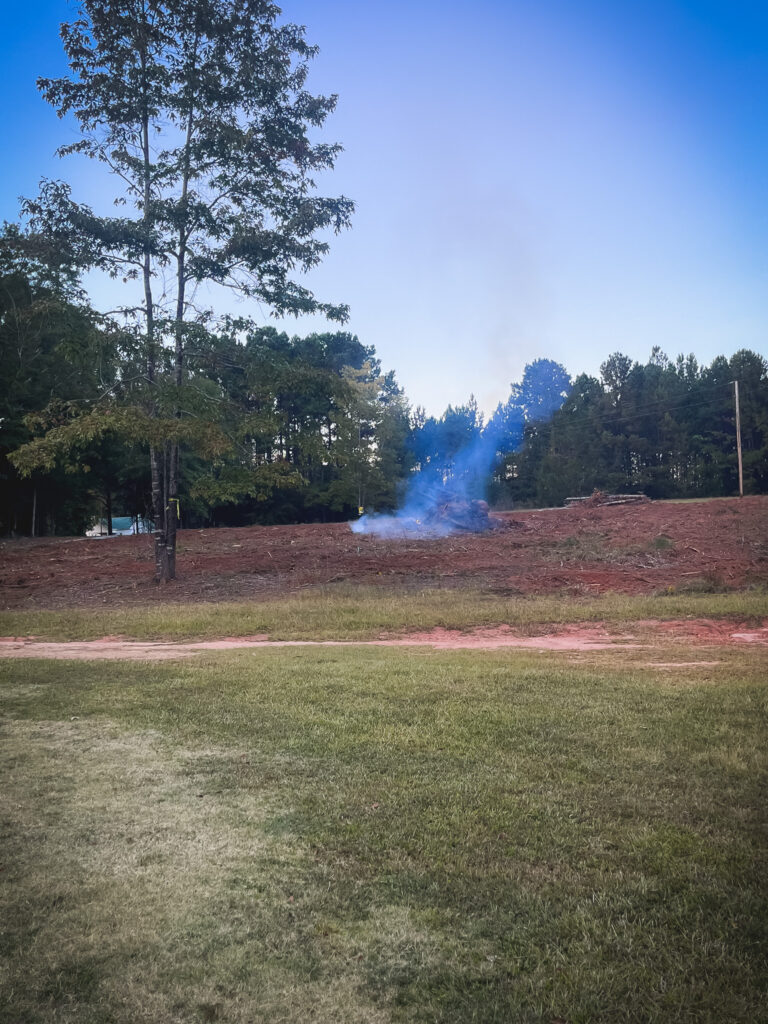
Blueberry Bushes
Learning how to plant blueberry bushes isn’t as complicated as you might think. At least that’s how it has been for me. It just takes a bit of research and a few supplies. Most varieties need cross pollination to have a big yield. This can be tricky depending on the blooming time of a particular species. If all of this sounds foreign to you, it did to me also.
While researching various blueberry plants we stumbled on a little jewel of a place in Georgia called Ison’s Nursery. They are primarily known for their muscadine varieties, but they carry so much more. Their website is a wealth of information on how to grow blueberry plants, so it made choosing so much easier. If you are in the market for berries or muscadines I highly recommend them.
Blueberry Varieties
We went with these varieties of Rabbiteye blueberries:
- Powderblue
- Ochlockonee
- Titan
- Krewer
- Vernon
After deciding which blueberry plants we wanted to grow, Brent made the drive to pick them up. They were very helpful and knowledgable. The business has been family owned for years, and they spent a lot of time explaining how to plant the blueberries for the best results. (I am not affiliated with Ison’s Nursery. We are just very impressed with them.)

Blueberry Plant Soil
Blueberries like well drained soil with a PH of 4.5-5.2. It’s best to have your soil tested before amending it. The soil should also be well drained. This part of Alabama is known for its red clay. We knew we’d need to add something to our soil to achieve that acidic level, and to help with drainage. After talking with the folks at Ison’s we decided to go with peat moss.
Planting Blueberry Bushes
Growing blueberry plants begins by digging a large hole. About two times the diameter and depth of the pot. Plants should be spaced about five feet apart. Wet your peat moss prior to planting the blueberries. Next, add a half-and-half mixture of peat moss and soil to the hole. This ratio can vary depending on the type of soil amendment you decide to use. Soil testing will help you better determine what your soil needs. Prior to planting, remove the roots from the container and break them up a bit gently with your hands. This will help the roots to branch out in the hole.
Backfill the hole with enough soil so that the stem of the plant is at ground level. You don’t want your plant too deep or raised above the ground. Fill the soil in around the roots, and pack the roots in with your hands. This will help prevent the soil for eroding.
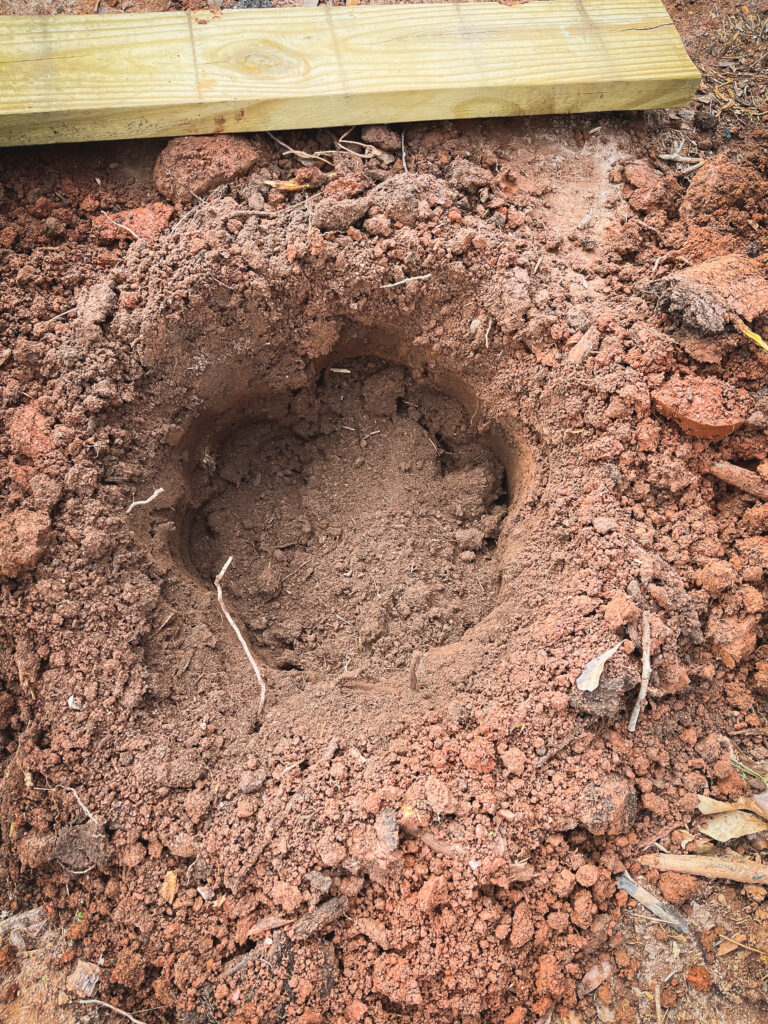
Mulch around the plants with pine straw or bark. This will help maintain moisture in the soil and decrease weed growth. Weeds can steal nutrients from the plant causing them to produce less fruit.
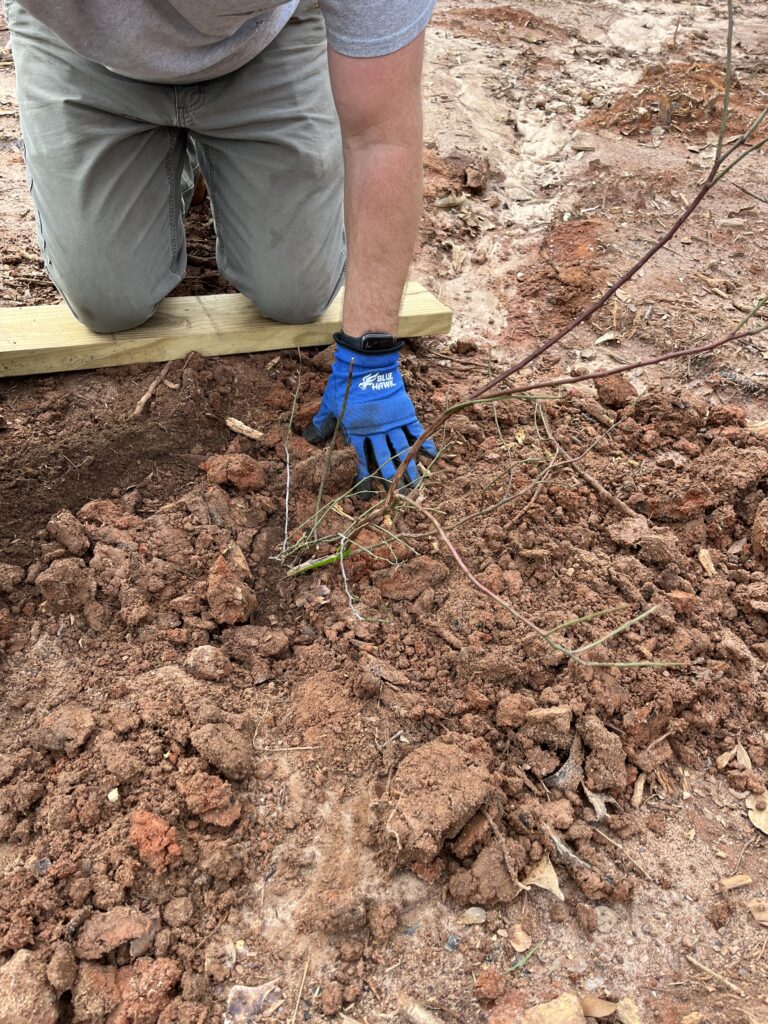
Choosing a Location for your Blueberry Bushes
It’s important to choose a sunny location for blueberries. They will produce more fruit if they are in direct sunlight. However, blueberry plants can tolerate a little shade. They should also be planted in a place with well drained soil. They will not tolerate standing water. We had an open field in the front of our property that was the perfect spot for the plants.
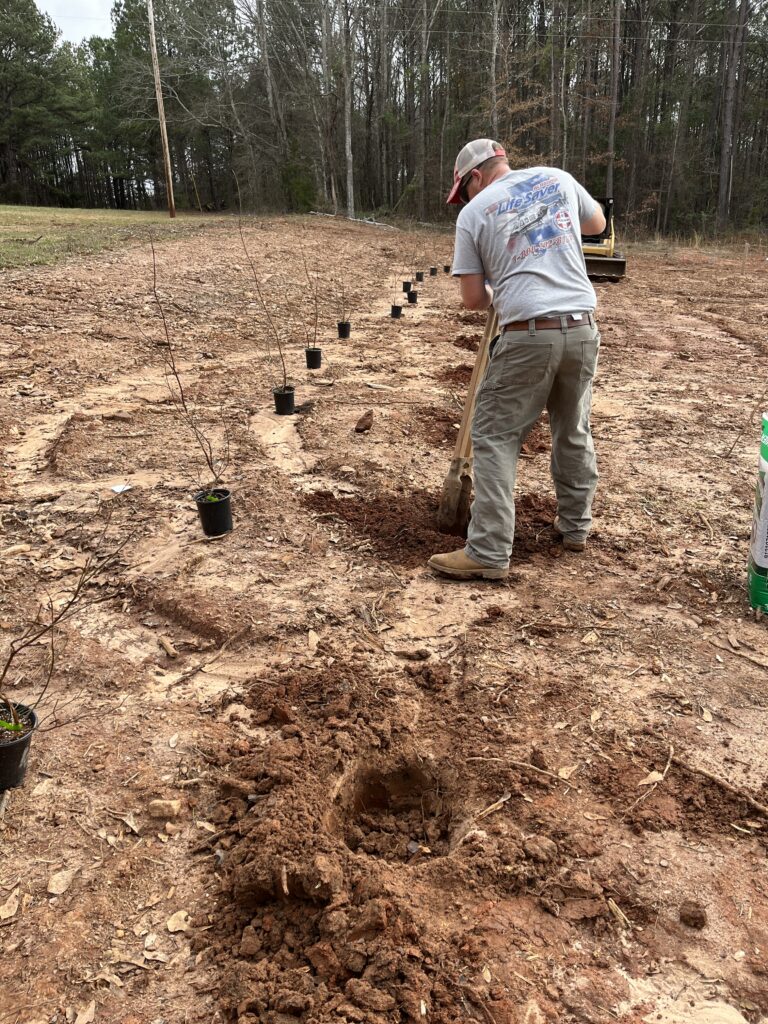
Fertilizer
Fertilizer can help your plant produce more fruit, but I try to use more natural fertilizers on my plants. This is a really personal choice. The plants should be fertilized in early spring. I prefer this brand of fertilizer if I use it on my plants. While the plants are becoming established, fertilizer may be needed twice a year. Once in early spring, and once in early summer. After they are established they will need to be fertilized only once.
Enjoying Your Blueberry Plants
I’ve recently become interested in perennial plants. I tend to be a lazy gardener, and established perennials take a lot less effort from me. Blueberry plants fit the bill perfectly. They are easy to maintain, and will give you fruit for years to come. They are also very versatile. Given the right soil conditions, they can produce in shade and direct sun. Their versatility makes them a practical addition to almost any landscape.
I hope this post inspires you to plant a few blueberry plants around your home and enjoy the fruits for years to come.
If you enjoyed this article, please share it! Thanks for visiting my farm.
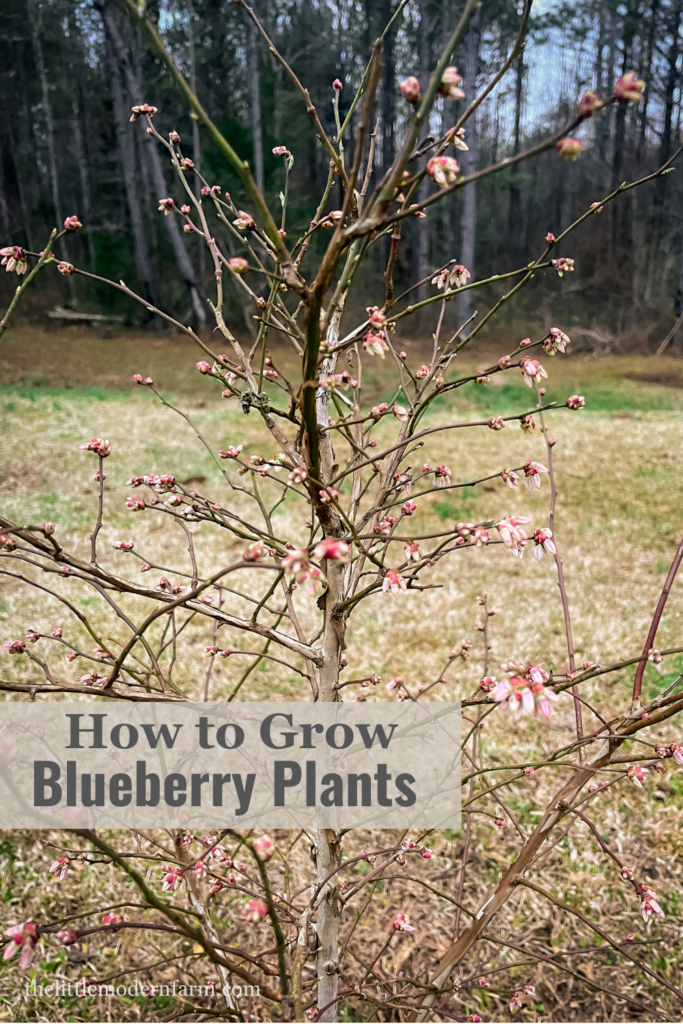
[…] morning cereal, bake them into muffins, or even use them in salads and sauces for a tasty twist. Growing blueberries in the southern states is pretty easy, […]